Item:Black Shoe LaceIntended Purpose:Fastening a shoe to your feet by lacing it through the eyelets, pulling it tight, and tying a knot to keep it tight.Design choices made to facilitate this intended use: Manufacturers tend to use material which provide durability, strength, and flexibility (which are attributes most people would like to see in their shoe laces). This can be a natural material like cotton. Or (more commonly) similar synthetic materials like polyester or nylon. Shoe laces also come in various different length and thicknesses to allow people to lace up different types of shoes. Most standard consumer footwear will have flat laces which are considered to be aesthetically pleasing; whereas military footwear will most often have very thin, round laces to allow for a tighter and more secure knot. Military boot laces also tend to be textured and grippy to prevent the knot from slipping. Most shoelaces have aglets on the end which makes it easier to thread the lace through the eyelets. The aglets can be done using metal, rubber, or plastic.We are going to assume that our shoelace is thin, round, made from polyester, and has plastic aglets.Here is sort of a text summary all the materials that go into a shoelace:Polyester (lace)Produced through various chemical reactions and is then dyed. The dye is also produced through chemical reactions.Plastic (Aglet)Made with plastic resin.
Crude Oil Extraction
Crude oil extraction is the process of recovering crude oil from underground reservoirs. It involves drilling wells into the Earth's crust to access oil-bearing rock formations. Once a well is drilled, crude oil flows to the surface naturally due to reservoir pressure or is pumped out using various techniques. The extracted oil is then transported to refineries where it undergoes processing to produce fuels and other petroleum products. The top 3 crude oil extraction companies by profit are: Saudi Aramco (Saudi Arabia), ExxonMobil (USA), and Royal Dutch Shell (UK).
Drilling
Before drilling begins, geologists and geophysicists survey potential oil-rich areas using various techniques like seismic imaging, gravity surveys, and magnetic surveys. These methods help identify subsurface structures that may contain oil reservoirs. Once a potential oil reservoir is identified, the drilling process begins. The primary machine used for drilling is called a drilling rig. There are different types of drilling rigs, including onshore rigs, offshore rigs, and directional drilling rigs.
Onshore Rigs
These rigs are used for drilling on land. The top 3 onshore rig manufacturers by profit are: National Oilwell Varco (USA), Helmerich & Payne, Inc. (USA), and Patterson-UTI Energy, Inc. (USA).
Offshore Rigs
These rigs are used for drilling in bodies of water, ranging from shallow to deep offshore locations. The top 3 offshore rig manufacturers by profit are: Transocean (Switzerland), Seadrill (USA), and Noble Corporation (USA, UK). The top 3 manufacturers of electrostatic desalters by profit are:Schlumberger (USA)Cameron International Corporation (USA)Croda International Plc
Directional Drilling Rigs
These rigs are capable of drilling at various angles and are used to reach specific targets underground. The top 3 directional drilling rig manufacturers by profit are: Schlumberger (USA), Halliburton (US, UAE), and Baker Hughes (USA).
Extraction
Production Tubing
Production tubing is inserted into the well to transport oil and gas to the surface. The top 3 manufacturers of production tubing by profit are Tenaris (Luxembourg), Vallourec (France), and TMK (Russia).
Packers
Packers are devices used to isolate and seal off sections of the wellbore. The top 3 packer manufacturers by profit are Halliburton (USA, UAE), Baker Hughes (USA), and Schlumberger (USA).
Downhole Pumps
Downhole pumps may be installed to lift oil to the surface, particularly in wells with low reservoir pressure. The top 3 downhole pump manufacturers by profit are Schlumberger (USA), Weatherford international (USA), and Baker Hughes (USA).
Production
Pumpjacks
Also known as nodding donkeys or horsehead pumps, pumpjacks are commonly used in onshore oil production to mechanically lift oil to the surface. The top 3 pumpjack manufacturers by profit are Schlumberger (USA), Weatherford International (USA), and General Electric (USA).
Submersible Pumps
Submersible pumps are placed downhole and are powered electrically to lift oil from deeper wells. The top 3 submersible pump manufacturers by profit are Grundfos (Denmark), Xylem Inc. (USA), and Sulzer (Switzerland).




USA

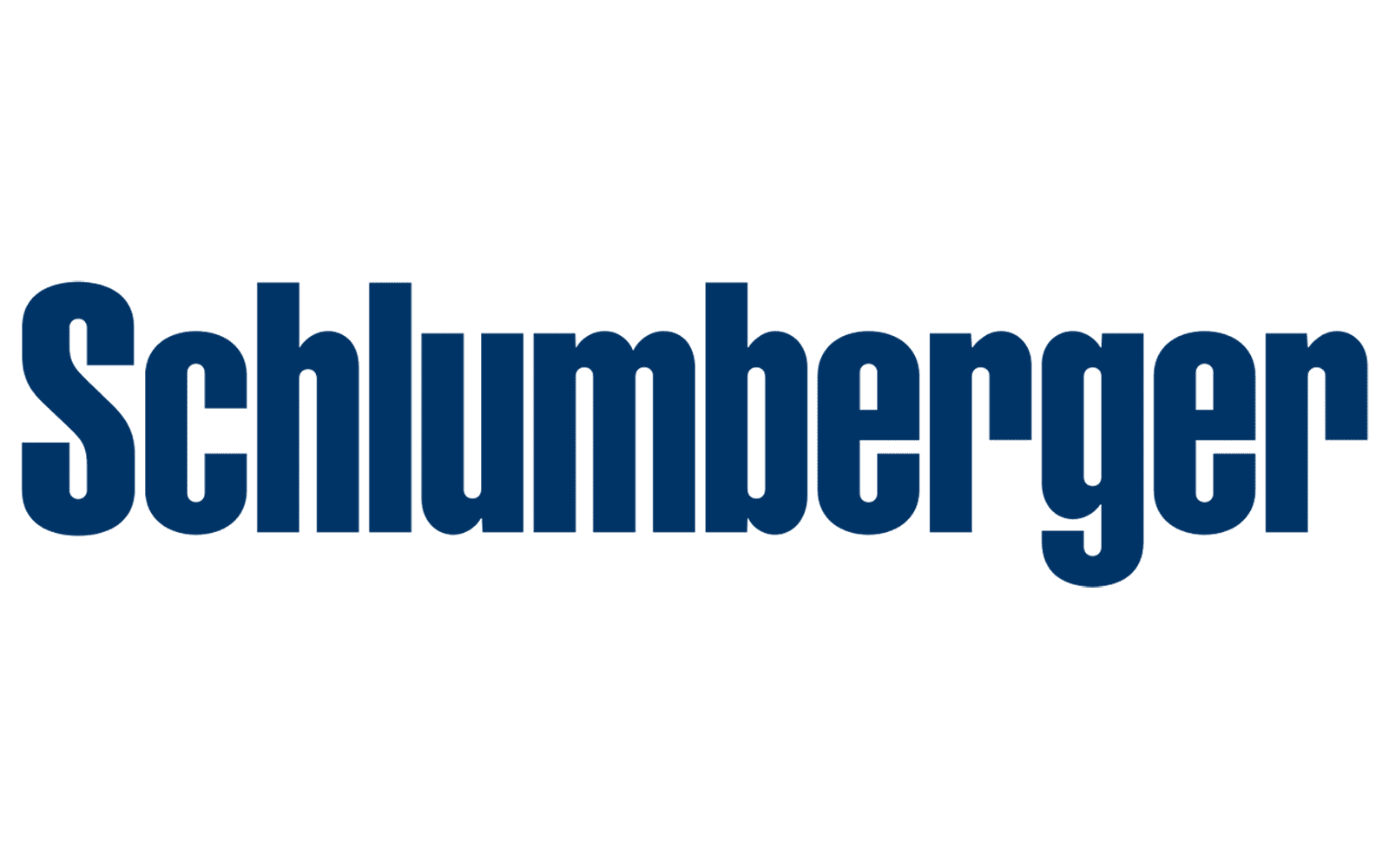

UK



Saudi Aramco conducts crude oil extraction primarily within the borders of Saudi Arabia.

The top 3 countries where ExxonMobil conducts crude oil extraction by amount of oil extracted are:United StatesIraqRussia
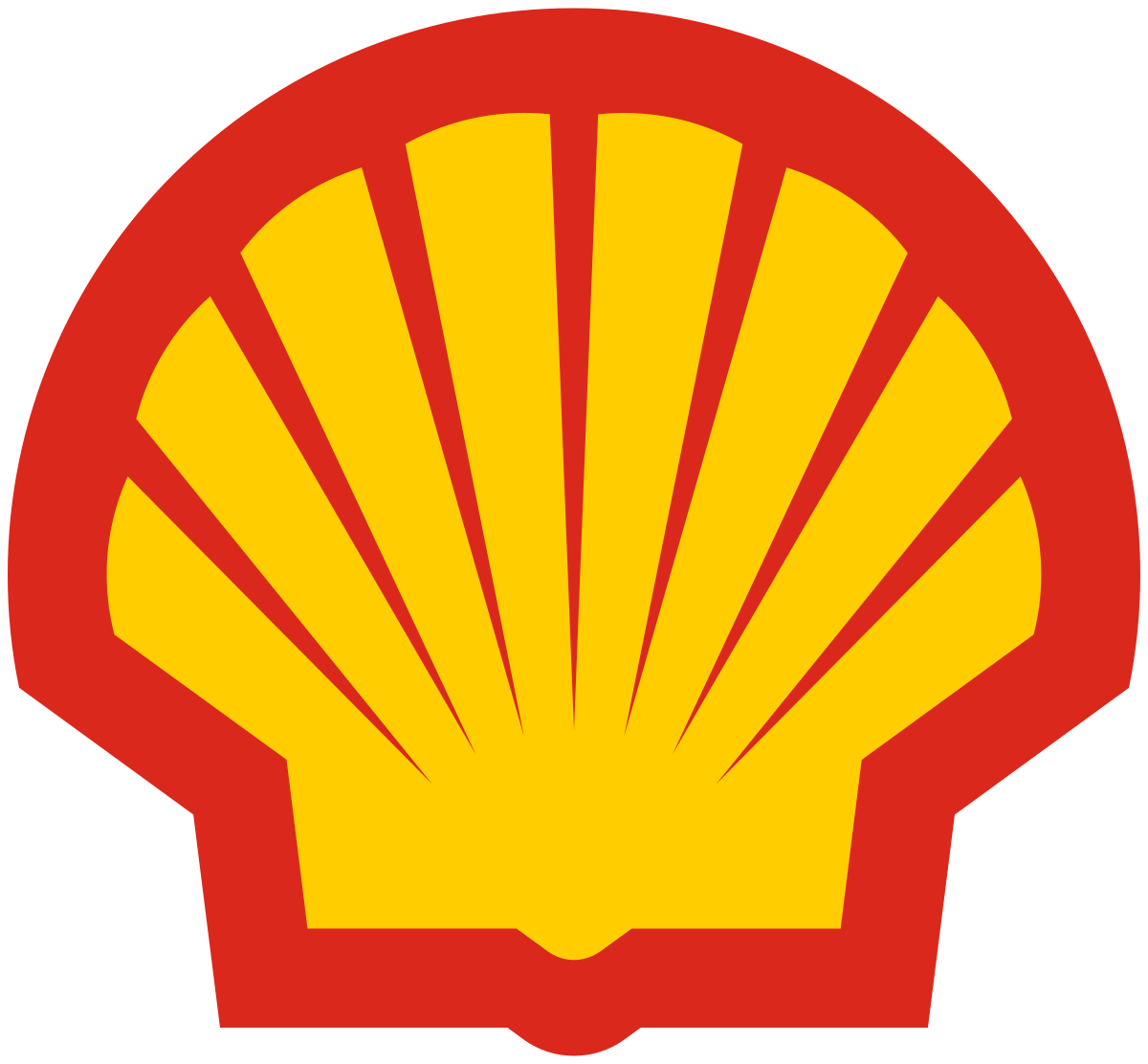
The top 3 countries where shell has conduction crude oil extraction by amount of oil extracted are:NigeriaUnited StatesCanada

UAE

Saudi Arabia


France


Russia


Luxembourg




Denmark
Crude Oil Refining
Crude oil refining is the process of converting crude oil into various useful products like gasoline, diesel, jet fuel, and various petrochemicals. The crude oil is heated in a furnace, and its components vaporize at different temperatures. Some of the heavier fractions may undergo processes like cracking, where large hydrocarbon molecules are broken down into smaller ones, or reforming, where molecules are rearranged to create higher-octane gasoline components. Various treatments are employed to improve the quality of the refined products. Different refined products are often blended together to meet specific requirements or regulatory standards. The refined products are then stored and distributed to various markets for consumption. The top 3 companies that conduct crude oil refining are:Saudi Aramco (Saudi Arabia)Sinopec (China)ExxonMobil (USA)
Desalting
Before crude oil can be processed, it often undergoes desalting to remove any salts and other impurities. This is typically achieved through the use of electrostatic desalters, which use high-voltage electricity to separate the water and salts from the crude oil.
Electrostatic Desalters
The top 3 manufacturers of electrostatic desalters are:Schlumberger (USA)'Alfa Laval (Sweden)Cameron International Corporation (USA)
Fractional Distilation
The main process of crude oil distillation involves fractional distillation, where the crude oil is heated and vaporized in a distillation column. The column consists of several trays or packing materials that facilitate the separation of different hydrocarbon fractions based on their boiling points. As the vapor rises through the column, it cools down, condenses, and collects in different trays or sections according to their boiling points.
Distillation Columns
These columns are the heart of the distillation process. They are typically made of steel and can be several stories tall. The top 3 manufacturers of distillation columns by profit are:Koch-Glitsch (USA)Sulzer Ltd. (Switzerland)L&T-Chiyoda Limited (India)
Heat Exchangers
Heat exchangers are used to heat the crude oil before it enters the distillation column. They transfer heat from hot products leaving the column to the incoming crude oil. The top 3 manuifacturers of heat exchangers by profit are:Alfa Laval (Sweden)Danfoss (Denmark)Kelvion (Germany)
Reboilers
Reboilers are used to vaporize the liquid in the bottom of the distillation column, providing the necessary heat for separation. This vapor rises up the column, carrying the heavier components with it. The top 3 manufacturers of reboilers by profit are:Koch Heat Transfer Company (USA)Alfa Laval (Sweden)Xylem (USA)
Distributed Control System
Throughout the distillation process, various instruments and control systems are used to monitor and control temperature, pressure, and flow rates to ensure optimal operation and product quality. These include sensors, controllers, and distributed control systems (DCS). The top 3 DCS manufacturers by profit are:Honeywell Process Solutions (USA)Siemens AG (Germany)ABB Ltd. (Sweden)
Light Naphtha Fractions.
As crude oil is heated in a distillation column, it undergoes vaporization. The vapor rises through the column, and as it ascends, it cools down due to the decreasing temperature gradient in the column. As the vapor cools, its components begin to condense at different heights within the column based on their boiling points. Lighter hydrocarbons, including light naphtha, have lower boiling points and tend to condense at higher levels in the column, closer to the top. The design of the distillation column plays a crucial role in separating light naphtha fractions. The trays or packing materials in the column provide surfaces for condensation and vapor-liquid contact, facilitating the separation of different hydrocarbon fractions. Light naphtha fractions, which typically consist of hydrocarbons with 5 to 9 carbon atoms (C5-C9), are collected from the upper sections of the distillation column. These fractions are relatively volatile and include components such as pentane, hexane, and heptane. To optimize the separation of light naphtha fractions, operators carefully control the temperature and pressure conditions within the distillation column. Lower temperatures and pressures favor the condensation of lighter hydrocarbons, while heavier fractions remain in the vapor phase or condense at lower levels in the column. At the top of the distillation column, an overhead condenser is used to cool and condense the vaporized hydrocarbons, allowing for the collection of light naphtha fractions. The condensed liquid is then collected and sent for further processing or storage. Throughout the process, operators continuously monitor the quality of the light naphtha fractions to ensure they meet desired specifications for use in various applications such as gasoline blending, petrochemical feedstock, or as solvents.
Para-Xylene
P-xylene is an important chemical compound used in the production of polyester fibers, plastics, and resins. It is commonly derived from catalytic reforming. It typically begins with the selection of suitable feedstocks, which are usually light naphtha fractions obtained from the distillation of crude oil.P-Xylene is usually produced in China, USA, and South Korea
Catalytic Reforming
Catalytic reforming is a process used in the petroleum industry to convert low-value hydrocarbons into higher-value products, such as gasoline blending components and aromatics like benzene, toluene, and xylene isomers (ortho-xylene, meta-xylene, and para-xylene). The top 3 companies that comduct catalytic reforming by profit are:Honeywell UOP (USA)Axens (France)Haldor Topsoe (Denmark)
Feedstock Preheating
Before entering the reforming reactors, the feedstock (typically light naphtha fractions) needs to be preheated to the desired reaction temperature. Feedstock preheaters are used for this purpose, where heat exchange processes raise the temperature of the feedstock using hot gases or steam. The top 3 manufacturers of feedstock preheaters by profit are:
Feedstock Preheaters
The top 3 manufacturers of feedstock preheaters by profit are:Alfa Laval (Sweden)Thermax Limited (India)Koch Heat Transfer Company, LP (USA)
Reforming Units
The heart of the catalytic reforming process is the reforming unit itself, typically composed of a series of fixed-bed reactors containing a suitable catalyst. Among the most common catalysts used are platinum, palladium, or a combination of these metals supported on a porous material like alumina. The top 3 manufacturers of catalytic reforming units by profit are:Honeywell UOP (USA)Axens (France)TechnipFMC (USA, UK)
Fixed Bed Reactors
Catalytic reforming units contain a series of fixed-bed reactors where the reforming reactions take place. These reactors are filled with a catalyst, often composed of platinum, palladium, or a combination of these metals supported on a porous material like alumina. The reactors are designed to provide optimal contact between the catalyst and the feedstock for efficient conversion reactions. The top 3 manufacturers of fixed bed reactors by profit are:Haldor Topsoe (Denmark)CB&I (USA)Alfa Laval (Sweden)
Furnaces
Furnaces are used to provide the high temperatures necessary for the reforming reactions to occur. These furnaces heat the feedstock and catalyst to the desired operating temperature range, typically between 450°C to 550°C (842°F to 1022°F), depending on the specific catalyst and reaction conditions. The top 3 manufacturers of these furnaces are:Linde Engineering (Ireland)KBR, Inc. (USA)Shell Global Solutions (UK)
Reactor Regenerators
Over time, the catalyst in the reforming reactors can become deactivated due to coke buildup and other factors. Reactor regenerators are used to regenerate the spent catalyst by burning off the accumulated coke and restoring its activity for further use in the reforming process. The top 3 manufacturers of reactor regenerators by profit are:Linde Engineering (Ireland)TechnipFMC (USA, UK)KBR, Inc. (USA)
Heat Exchangers
Heat exchangers play a crucial role in the catalytic reforming process by facilitating heat transfer between different streams, such as between the hot reactor effluent and the feedstock or between various process fluids. This helps optimize energy efficiency and maintain the desired operating temperatures throughout the system. The top 3 manufacturers of heat exchangers by profit are:Alfa Laval (Sweden)Kelvion Holding GmbH (Germany)Danfoss Group (Denmark)
Compressers and Pumps
Compressors and pumps are used to handle and transport various fluids within the catalytic reforming unit, such as feedstock, hydrogen, and product streams. They ensure proper circulation, pressure control, and flow rates to maintain efficient operations. The top 3 manufacturers of compressors and pumps by profit are:Atlas Copco (Sweden)Flowserve Corporation (USA)Sulzer (Switzerland)
Separation and Fractionation
Once the reforming reactions are complete, the product stream is sent to a separation and fractionation unit, where various components are separated based on their boiling points and molecular weights. This process typically involves distillation columns and other separation techniques to isolate the desired products.
Separators
After the reforming reactions, the product stream contains a mixture of hydrocarbons, including aromatics like benzene, toluene, and xylenes. Separators are used to separate gases, liquids, and solids from the product stream. The top 3 manufacturers of separators are:Sulzer Chemtech (Switzerland)Pall Corporation (USA)Koch-Glitsch (USA)
Fractionation Columns
The top 3 manufacturers of fractionation columns by profit are:Koch-Glitsch (USA)Sulzer Chemtech (Switzerland)Trimeric Corporation (USA)

Nigeria
Canada

Iraq


India



Sweden


Denmark


Germany









Ireland



Purified terephthalic acid (PTA) / dimethyl terephthalate (DMT)
Purified Terephthalic Acid (PTA) and Dimethyl Terephthalate (DMT) are both important chemical compounds used in the production of polyester fibers, films, and resins.PTA is produced using Para-Xylene.DMT is produced using Para-Xylene and Methanol.PTA and DMT are mainly produced in China, USA, and India.
Purification of Raw Materials
The crude para-xylene or methanol undergoes purification processes to remove impurities. Distillation towers are commonly used for this purpose.
Distillation Columns
The top 3 manufacturers of P-Xylene/Methanol Distillation Columns by profit are:Koch-Glitsch (USA)Sulzer (Switzerland)Chematur Engineering (Sweden)
Oxidation or Esterification
For PTA production, para-xylene undergoes oxidation using a catalyst such as cobalt-manganese or vanadium oxide. This process converts para-xylene into terephthalic acid.DMT production involves esterification of para-xylene with methanol in the presence of an acid catalyst, typically sulfuric acid or a solid acid catalyst like zeolites.
Reactors
The top 3 manufacturers of P-Xylene/Methanol Distillation Columns by profit are:Koch-Glitsch (USA)Sulzer (Switzerland)Chematur Engineering (Sweden)
Crystallization and Purification
The crude PTA or DMT is then subjected to crystallization to separate it from impurities.
Crystalizers
Filtration and Drying
The crystalline PTA or DMT is then filtered to remove any remaining impurities. After filtration, the product is dried to remove any residual moisture.
Filtration Equipment
Packaging and Distribution
The purified PTA or DMT is then packaged into bags, drums, or bulk containers, depending on customer requirements.
Packaging Lines
Methanol
Methanol is primarily produced through the synthesis gas (syngas) route, which involves converting various feedstocks such as natural gas, coal, biomass, or industrial waste gases into syngas, followed by catalytic conversion to methanol.Methanol production usually takes place in china,
Syngas Generation
Steam Reformers
The top 3 manufacturers of steam reformers by profit are:Linde Engineering (Ireland)Air Liquide (France)TechnipFMC (USA, UK)
Carbon Monoxide Equipment
The top 3 manufacturers of carbon monoxide equipment by profit are:Air products and Chemicals Inc. (USA)Linde Engineering (Ireland)Praxair Inc. (Ireland)
Syngas Cleanup
Gas Cleanup Systems
The top 3 manufacturers of gas cleanup systems by profit are:General Electric (USA)Shell Global Solutions (UK)Johnson Matthey (UK)
Methanol Sythesis
The cleaned syngas is then fed into a methanol synthesis reactor where it undergoes catalytic conversion to methanol. The most common catalyst used is a mixture of copper, zinc oxide, and alumina known as a Cu/ZnO/Al2O3 catalyst.
Methanol Synthesis Reactor
The top 3 manufacturers of methanol synthesis reactors by profit are:Haldor Topsoe (Denmark)Johnson Matthey (UK)BASF (Canada)
Methanol Purification
After synthesis, the crude methanol undergoes purification to remove water, unreacted gases, and impurities.
Distillation Columns
The top 3 manufacturers of methanol distillation columns by profit are:Sulzer (Switzerland)Koch-Glitsch (USA)UOP (USA)
Storage and Distribution
The purified methanol is stored in tanks or transported via pipelines, ships, or tankers to various industries and markets worldwide.
Storage Tanks
The top 3 manufacturers of methanol storage tanks by profit are:McDermott (USA)CB&I (Netherlands)CST Industries (UK)
Natural Gas
In regions with abundant natural gas reserves, such as the United States, Russia, and Iran, natural gas is a common feedstock for methanol production. The gas is first processed to remove impurities like sulfur compounds, water, and heavy hydrocarbons using processes like desulfurization and drying. The top 3 producers of natural gas by profit are:Gazprom (Russia)ExxonMobil (USA)Royal Dutch Shell (UK)
Exploration and Drilling
Geologists and geophysicists analyze geological formations to identify potential gas reservoirs.Seismic surveys are conducted to map subsurface structures and identify potential gas-bearing formations.Once a promising area is identified, drilling operations begin.
Seismic Survey Equipment
The top 3 manufacturers of seismic survey equipment by profit are:Schlumberger Limited (USA)CGG (France)Sercel (France)
Drill Rigs
The top 3 manufacturers of pens by profit are:Schlumberger Limited (USA)Baker Hughes (USA)Halliburton (USA, UAE)
Extraction and Well Completion
After drilling a well, casing and cementing are done to secure the wellbore. Hydraulic fracturing (fracking) may be used to stimulate gas flow in tight formations. Well completion involves installing production equipment such as wellheads, tubing, and valves.
Fracking Equipment
Fracking pumps, fluid handling systems, and proppants. The top 3 manufacturers of fracking equipment by profit are:Schlumberger (USA)Halliburton (USA, UAE)Baker Hughes (USA)
Wellhead Equipment
The top 3 manufacturers of wellhead equipment by profit are:Cameron (USA)Baker Hughes (USA)National Oilwell Varco (USA)
Production and Processing
Once gas is produced, it is sent through gathering pipelines to processing plants.At processing plants, gas is treated to remove impurities like water, carbon dioxide, and sulfur compounds.Gas is then compressed to increase pressure for transportation through pipelines or liquefaction for export as LNG (liquefied natural gas).
Gas Processing Equipment
The top 3 manufacturers of gas processing equipment by profit are:Honeywell UOP (USA)Black & Veatch (USA)TechnipFMC (USA, UK)
Compression Systems
The top 3 manufacturers of compression systems by profit are:Siemens (Germany)General Electric (USA)MAN Energy Solutions (Germany)
transmission and Distribution
High-pressure transmission pipelines transport gas over long distances. Distribution pipelines deliver gas to homes, businesses, and power plants. Gas meters and regulators are used to measure and control gas flow at various points.
Pipeline Equipment
The top 3 manufacturers of gas pipeline equipment by profit are:Enbridge Inc. (Canada)TC Energy (Canada)Kinder Morgan Inc. (USA)
Gas Metering and Regulation
The top 3 manufacturers of gas metering and regulation by profit are:Itron, Inc (USA)Honeywell International Inc. (USA)Sensus (USA)
Utilization and End-Use
Gas-fired power plants generate electricity by burning natural gas to drive turbines. Gas is used as a fuel in industries like manufacturing, petrochemicals, and steel production. It's also used as a feedstock for producing chemicals like ammonia and methanol.
Gas Turbines
The top 3 manufacturers of gas turbines by profit are:General Electric Power (USA)Siemens Energy (Germany)Mitsubishi Power (Japan)
Industrial Burners
The top 3 manufacturers of industrial burners by profit are:John Zink Hamworthy Combustion (USA)Babcock Wanson (France)Limpsfield Combustion Engineering Ltd. (UK)


China

The top 3 manufacturers of pens by profit are:Chlunberger Limited (USA)Baker Hughes (USA)Halliburton (USA, UAE)
a







Japan



Coal
In countries like China and the United States, coal can be gasified to produce syngas for methanol synthesis. The coal is crushed and reacted with oxygen and steam in a gasifier to generate syngas, which is then cleaned and conditioned.
Exploration and Drilling
Coal deposits are typically found in various regions worldwide, including the United States, China, India, Australia, Indonesia, and Russia, among others Exploration and site selection may involve equipment like drill rigs and geological surveying tools.
Geological Surveying Tools
The top 3 manufacturers of geological surveying tools by profit are:Trimble Inc. (USA)Leica Geosystems (Switzerland)Topcon Corporation (Japan)
Drill Rigs
The top 3 manufacturers of coal drill rigs by profit are:Caterpillar Inc. (USA)Sandvik AB (Sweden)Komatsu Ltd. (Japan)
Mining
Major coal mining regions include the Appalachian Basin in the United States, the Bowen Basin in Australia, and the Shanxi province in China.
aCoal Mining Machinery
The top 3 manufacturers of coal mining machinery by profit are:Caterpillar Inc. (USA)Komatsu Ltd. (Japan)Joy Global (Japan)
Preparation
Coal Preparation Machinery
The top 3 manufacturers of coal preparation machinery by profit are:McLanahan Corporation (USA)TerraSource Global (USA)Eriez Manufacturing Co. (USA)
Transportation
Coal Transportation Machinery
The top 3 manufacturers of coal transportation machinery by profit are:GE Transportation (USA)Siemens Mobility (Germany)Caterpillar Inc. (USA)
Biomass/Waste Gases
In some regions focused on sustainability, biomass or waste gases from industries like steel manufacturing can be used as feedstocks. Biomass is typically converted to syngas through gasification or pyrolysis processes.
Gasification
Gasification is a thermochemical process that converts biomass or waste materials into a gas mixture called syngas (synthesis gas), which primarily contains carbon monoxide (CO), hydrogen (H2), carbon dioxide (CO2), methane (CH4), and other trace gases.
Gasifiers
Gasifiers are specialized reactors designed to withstand high temperatures and pressures. The top 3 manufacturers of gasifiers by profit are:General Electric (USA)Siemens (Germany)Mitsubishi Heavy Industries (Japan)
Fermentation
Some biomass materials, such as agricultural residues and dedicated energy crops, can undergo fermentation to produce biogas. During fermentation, microorganisms break down organic matter in an oxygen-free environment, producing biogas primarily composed of methane (CH4) and carbon dioxide (CO2).
Biogas Equipment
Equipment for biogas production includes anaerobic digesters, gas storage tanks, and gas purification systems. The top 3 manufacturers of biogas equipment by profit are:EnviTec Biogas AG (Germany)Xergi A/S (Denmark)BTS Biogas (Italy)
Utilization
Chemical Synthesis




Italy


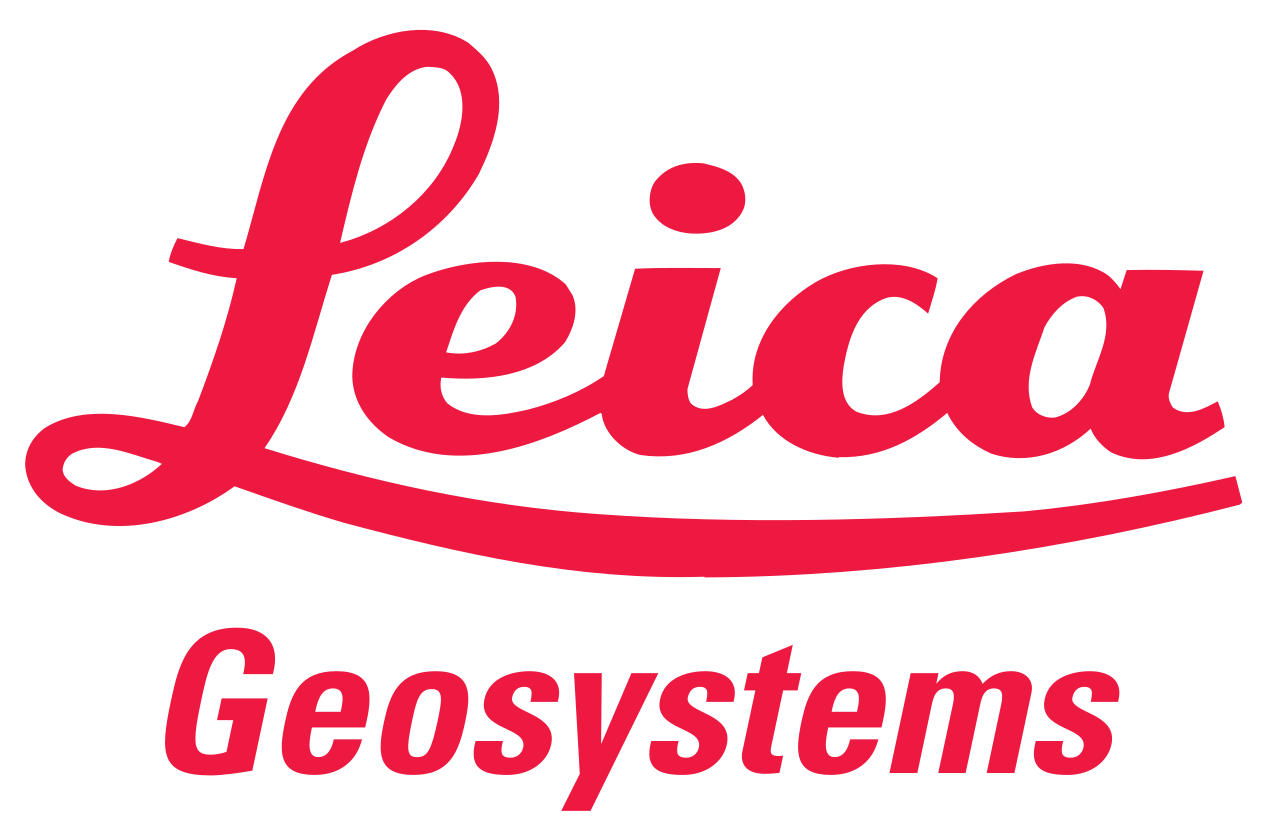











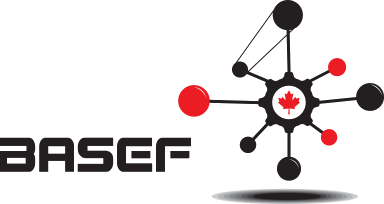

Netherlands

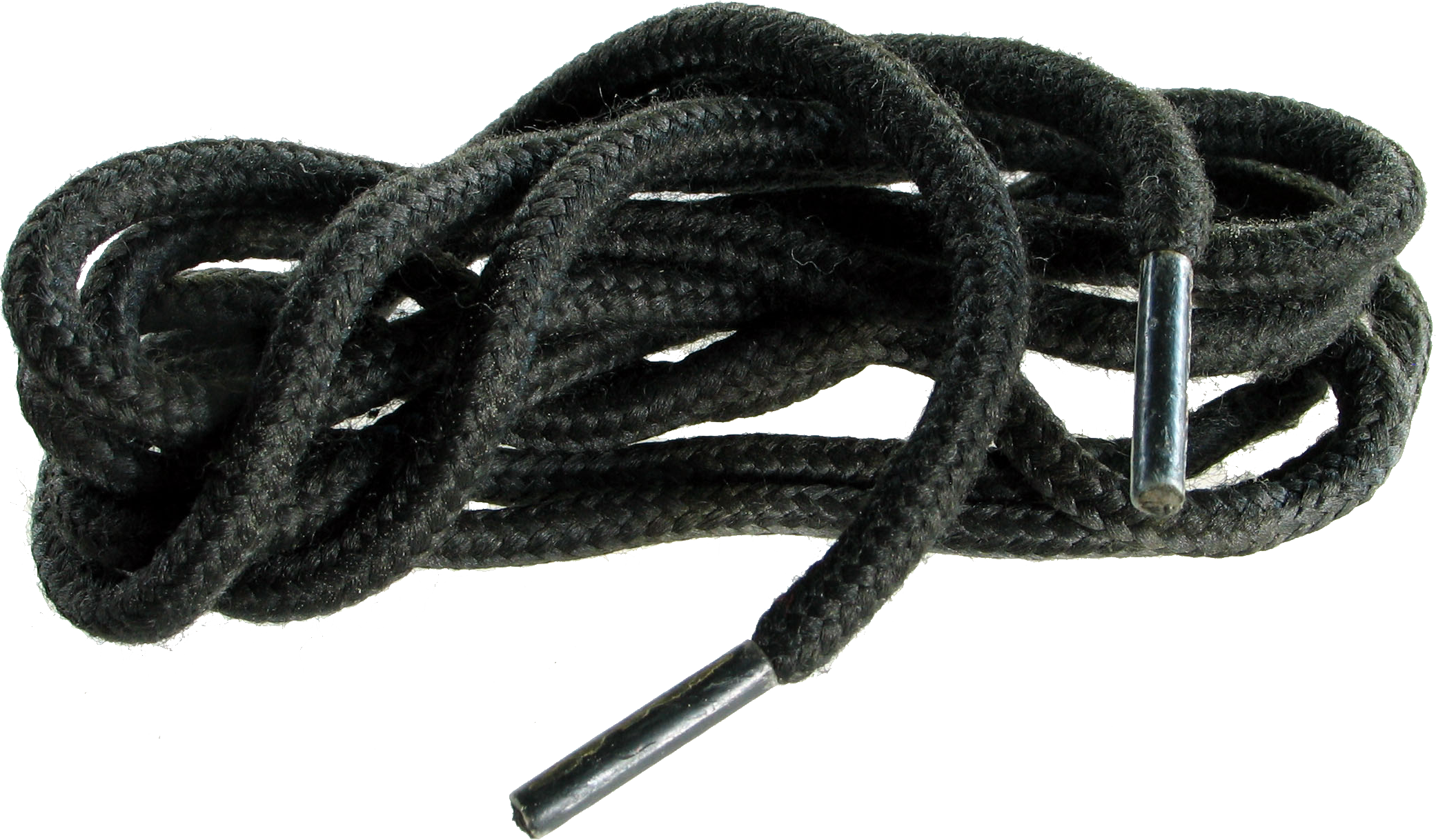
Black Shoe Lace
Item:Black Shoe LaceIntended Purpose:Fastening a shoe to your feet by lacing it through the eyelets, pulling it tight, and tying a knot to keep it tight.Design choices made to facilitate this intended use: Manufacturers tend to use material which provide durability, strength, and flexibility (which are attributes most people would like to see in their shoe laces). This can be a natural material like cotton. Or (more commonly) similar synthetic materials like polyester or nylon. Shoe laces also come in various different length and thicknesses to allow people to lace up different types of shoes. Most standard consumer footwear will have flat laces which are considered to be aesthetically pleasing; whereas military footwear will most often have very thin, round laces to allow for a tighter and more secure knot. Military boot laces also tend to be textured and grippy to prevent the knot from slipping. Most shoelaces have aglets on the end which makes it easier to thread the lace through the eyelets. The aglets can be done using metal, rubber, or plastic.We are going to assume that our shoelace is thin, round, made from polyester, and has plastic aglets.Here is sort of a text summary all the materials that go into a shoelace:Polyester (lace)Produced through various chemical reactions and is then dyed. The dye is also produced through chemical reactions.Plastic (Aglet)Made with plastic resin.


South Korea

Qatar

Iran
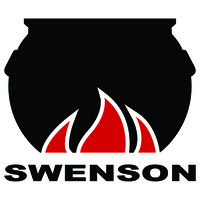
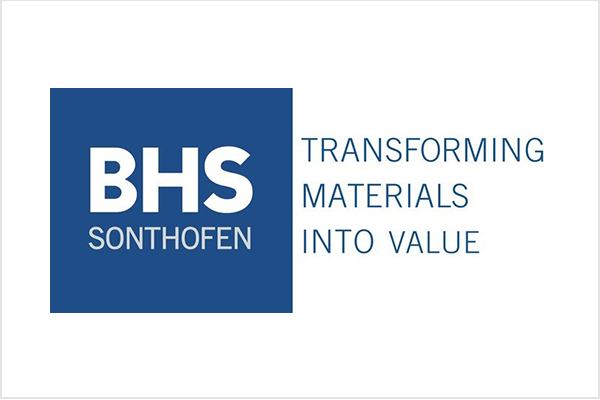


Austria


Viietnam
Ethylene Glycol
Ethylene glycol is primarily produced through the catalytic hydration of ethylene oxide. This process involves several steps and equipment, including reactors, distillation columns, and pumps.
Ethylene Oxide Hydration
The ethylene oxide produced in the previous step is then hydrated to form ethylene glycol. This hydration process is catalyzed by a catalyst such as phosphoric acid or a silver-based catalyst.
Ethylene Glycol Reactors
Distillation and Purification
After the hydration reaction, the mixture contains ethylene glycol along with water and unreacted ethylene oxide. The next step is to separate and purify ethylene glycol from these components.
Distillation Culumns
Black Polyester Yarn
Polymerization
The raw materials are combined in a reactor to undergo a chemical reaction called polymerization.
Polymerization Reactors
Filament Formation
Filament Machinery
Drawing and Stretching
The filaments are drawn and stretched to align the polymer chains, increasing strength and elasticity.This process can involve heated rollers or Godets that grip the filaments and pull them at controlled speeds.
Draw Machines
Disperse Dyeing
Disperse dyes are used for polyester since they have low solubility in water and need high temperatures (typically 120-130°C) for dyeing. The yarn is immersed in a dye bath containing dispersed dye particles, and the dye adheres to the polyester fibers during the high-temperature process.
Black Dye
Texturing
Texturizing gives the yarn a fuzzy, soft texture by introducing crimps or loops.This process can involve various methods like air texturizing, false twist texturizing, or friction texturizing.
Texturizing Machines
Twisting
Multiple filaments are twisted together to form a stronger, thicker yarn.Twisting can be done using ring spinning, open-end spinning, or air-jet spinning techniques.
Heat Setting
The twisted yarn is heat set to stabilize its dimensions and improve its resilience.
Heat Setters
Winding
The finished yarn is wound onto cones or spools for transportation and storage.
Automatic Winding Machines
Quality Control
Throughout the process, quality control measures are implemented to ensure the yarn meets specifications regarding strength, thickness, and appearance.
Quality Control Equipment






v










Singapore


Turkey
Black Polyester Lace
Twisting
Twisting of polyester yarn into a round shape can take place in textile mills and factories worldwide, with major production hubs in countries like China, India, Bangladesh, and Turkey. In the twisting process, multiple strands of polyester yarn are fed into the twisting machine, where they undergo twisting to create a round and durable structure. The machine's mechanism ensures that the yarn is twisted evenly and consistently. The twisting process is crucial for imparting strength and durability to the yarn, making it suitable for use as a shoelace that can withstand frequent bending and pulling.
Twisting Machines
Braiding
Braiding of twisted polyester yarn into a round shoelace can also occur in textile factories and specialized braiding facilities. In the braiding process, the twisted polyester yarn is fed into the braiding machine, where it undergoes interlacing to form a round and intricately woven shoelace. Braiding enhances the aesthetic appeal of the shoelace while adding further strength and resilience to withstand stretching and tightening during use.
Braiding Machines
Braiding machines, such as circular braiders or flat braiders, are used for this process. These machines have multiple carriers or bobbins that interlace the twisted yarn to create a braided structure. Some leading manufacturers of braiding machines include Spirka Schnellflechter GmbH, Wardwell Braiding Machine Company, and HERZOG Braiding Machines.
Finishing
Finishing processes, such as heat setting and coating, are typically carried out in specialized finishing facilities within textile factories. Equipment used for finishing may include heat setting machines and coating machines, depending on the desired properties of the shoelace.
Finishing Machinery
Manufacturers of finishing machinery vary widely, and they may include companies like Santex Group for heat setting machines and Thies GmbH & Co. KG for coating machines.
Packaging
Packaging of round shoelaces can occur at the final assembly stage within the textile factory or at dedicated packaging facilities.
Packaging Machinery
Manufacturers of packaging machinery range from large industrial equipment companies to specialized packaging solutions providers, such as Meler, ATS-Tanner Group, and ATS USAM.








Plastic Aglet
Creating a plastic aglet and applying it to the ends of a shoelace involves several detailed processes, including extrusion, molding, assembly, and finishing.
Extrusion
This process can take place in manufacturing facilities worldwide, including countries with advanced plastics industries like China, the United States, Germany, and Japan. Plastic pellets, typically made from materials like polyethylene (PE) or polypropylene (PP), are fed into an extrusion machine. Inside the machine, the pellets are heated and melted to a precise temperature, forming a molten plastic material. The extrusion process shapes the molten plastic into a long, thin tube with a diameter slightly larger than the shoelace diameter. This tube will later become the aglet.
Extrusion Machines
Extrusion machines are commonly used, such as those manufactured by companies like Davis-Standard, Milacron, and KraussMaffei.
Molding
Molding processes can occur in the same facilities as extrusion or in specialized molding factories. The extruded plastic tube is cut into specific lengths, each representing one aglet. These lengths are then placed into molds designed to give the aglet its final shape and features, such as the tapered end and internal structure for gripping the shoelace. Injection molding ensures that each aglet is precisely formed according to design specifications, including dimensions, color, and texture.
Injection Molding Machiens
Injection molding machines are commonly used for this step, such as those produced by Engel, Arburg, and Husky Injection Molding Systems.
Assembly
Assembly processes typically occur in the same manufacturing facilities as molding. The molded aglets are inspected for quality and consistency. They are then attached to the ends of shoelaces using methods like crimping, gluing, or heat sealing, depending on the design and material of the shoelace and aglet. Assembly ensures that the aglets are securely attached to the shoelaces, providing functionality and durability during use.
Assembly Machines
Assembly machines may include robotic arms, conveyor systems, and specialized tools for handling and attaching the aglets to shoelaces.
Finishing
Finishing processes can take place in the same facilities as assembly or in separate finishing departments. The assembled shoelaces with aglets undergo final inspection and finishing touches. This may involve trimming any excess material, polishing the aglets for a smooth finish, and checking for defects or inconsistencies. Finishing ensures that the shoelaces with aglets meet quality standards and are ready for packaging and distribution.
Finishing Equipment
Finishing equipment may include trimmers, polishers, and quality control stations.












